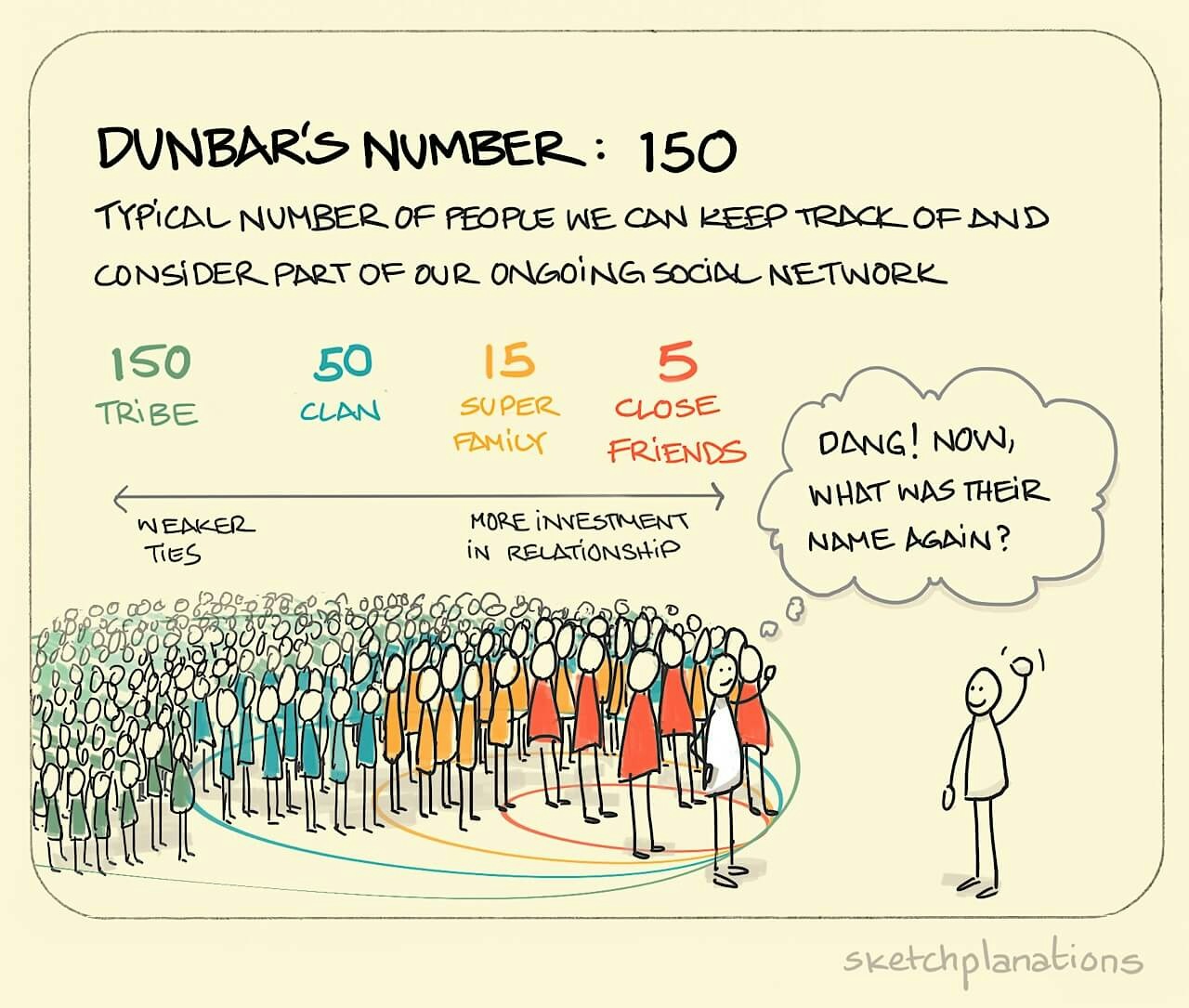Dunbar’s number: 150

- Listen
- Copied!
👇 Get new sketches each week
The evolutionary psychologist Robin Dunbar identified that an average person’s social network appears to follow simple scaling laws.
Our networks grow from our closest friends—whom we would seek personal advice or help from in times of severe emotional and financial distress—through our superfamily (or close friends), to our acquaintances (or clan), whom we might invite to a party, and to our most casual friends (or tribe).
At each level, the number of people typically increases by about a factor of 3. So you might have 5 close friends, 15 in your superfamily, about 50 in your clan and about 150 in your tribe.
The 150, with some variance, seems to be around the limit for the number of people we can keep track of, reasonably call part of our social network, and maintain as a cohesive group. This may be partly due to the limits of our memories and the effort it takes to maintain relationships.
There are many instances of the ~150 in action, for example, in challenges of transitioning companies as you exceed 150 employees while maintaining cohesiveness, the size of Neolithic farming communities and the basic unit size of Roman armies.
The number is actually 148, but 150 is catchier and seems fine between friends.

